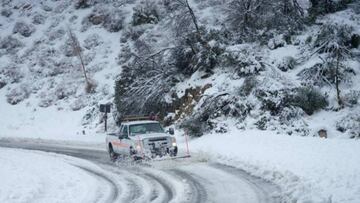What is a snow squall and why are they so dangerous?
Snow squalls can be extremely dangerous as the weather can change from sunny and pleasant to whiteout conditions rapidly making driving treacherous.

Snow squalls are winter’s version of a summertime thunderstorm, intense weather events but generally limited in duration. A beautiful day, sunny and pleasant, can rapidly deteriorate into whiteout conditions and the Artic air that these strong cold fronts bring can freeze roads in a matter of minutes.
Authorities warn that “there is no safe place on a highway during a snow squall.”
What is a snow squall and why are they so dangerous?
Snow squalls are “intense short-lived moderate to heavy snowfall bursts” according to the National Weather Service. Once a snow squall sets in, it quickly reduces visibility and combined with gusty winds produces whiteout conditions. The weather phenomena is “associated with strong cold fronts which bring Artic air during winter,” that can cause roads to “flash freeze”. This in turn often leads to “chain-reaction accidents and treacherous travel” conditions.
“Snow can turn a dry roadway into an ice-skating rink in just a few minutes. This increases your stopping distance by ten times,” said Jeff Jumper, a state meteorologist at the Pennsylvania Emergency Management Agency explained on public service announcement. “So at 70 miles per hour, instead of taking the length of a football field to stop, it will take half a mile. If you can’t see, and you can’t stop, your likelihood of getting into an accident increases significantly.”
A new Snow Squall Warning has been issued for the counties highlighted…now stretching east of the metro until 9:30. Travel will be difficult with bursts of heavy snow. @WHOWeather @WHO13news #13WarnMe #iawx pic.twitter.com/DxIyeO2lDU
— Ed Wilson (@EdWilsonWX13HD) January 2, 2025
Recommendations in the event of a snow squall
Related stories
Authorities advise to sign up for alerts on your cell phone to get the latest updates on weather conditions in your area. You should also avoid or delay motor travel until the squall has passed through your location. And it’s recommended that you consider an alternate route.
If you find yourself on the road when a snow squall hits, it’s recommended to turn on the vehicle’s headlights, reduce speed gradually and avoid slamming on your brakes. Stay in your lane and increase your following distance. Safely exit the road at the next opportunity.



Complete your personal details to comment